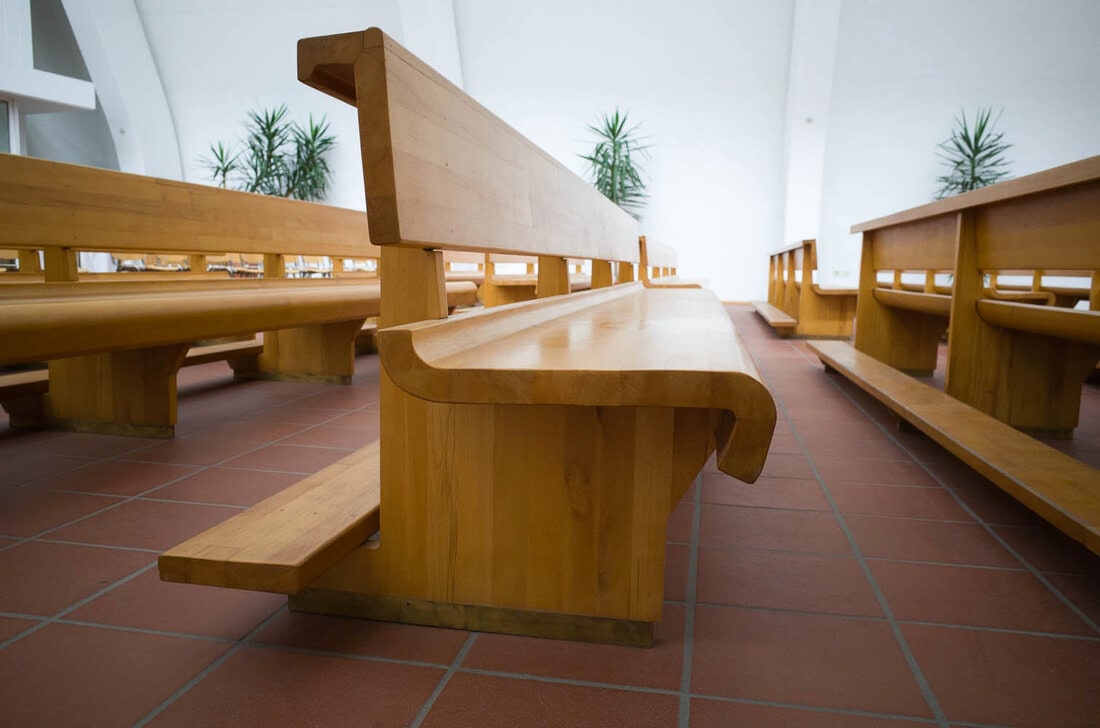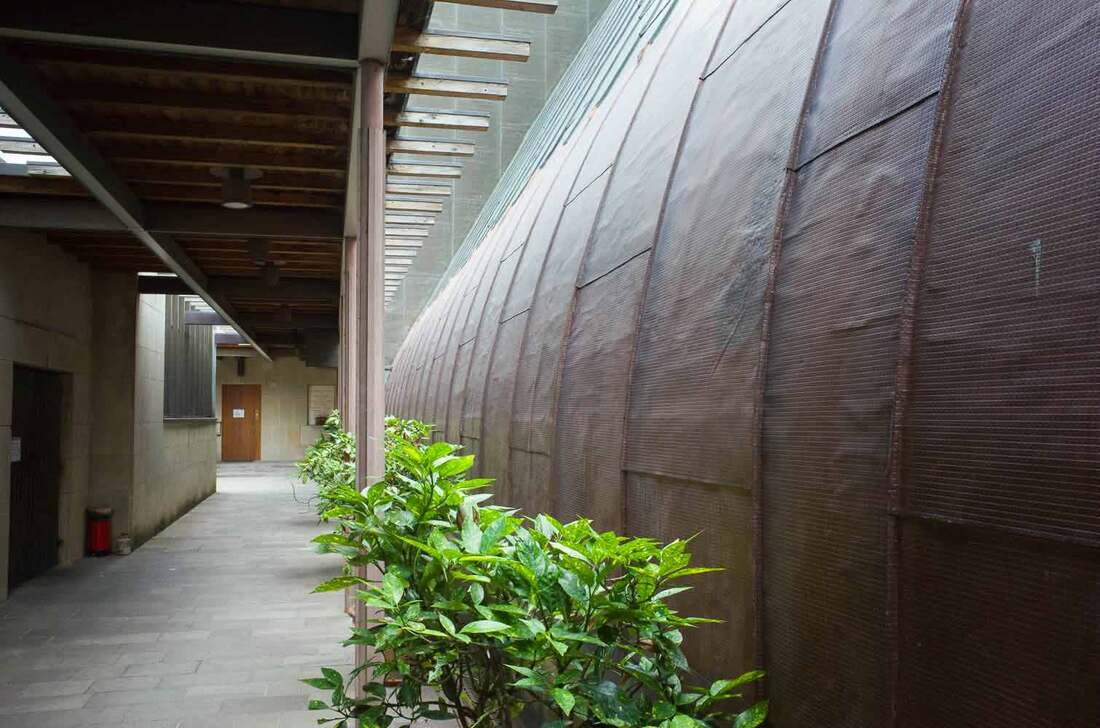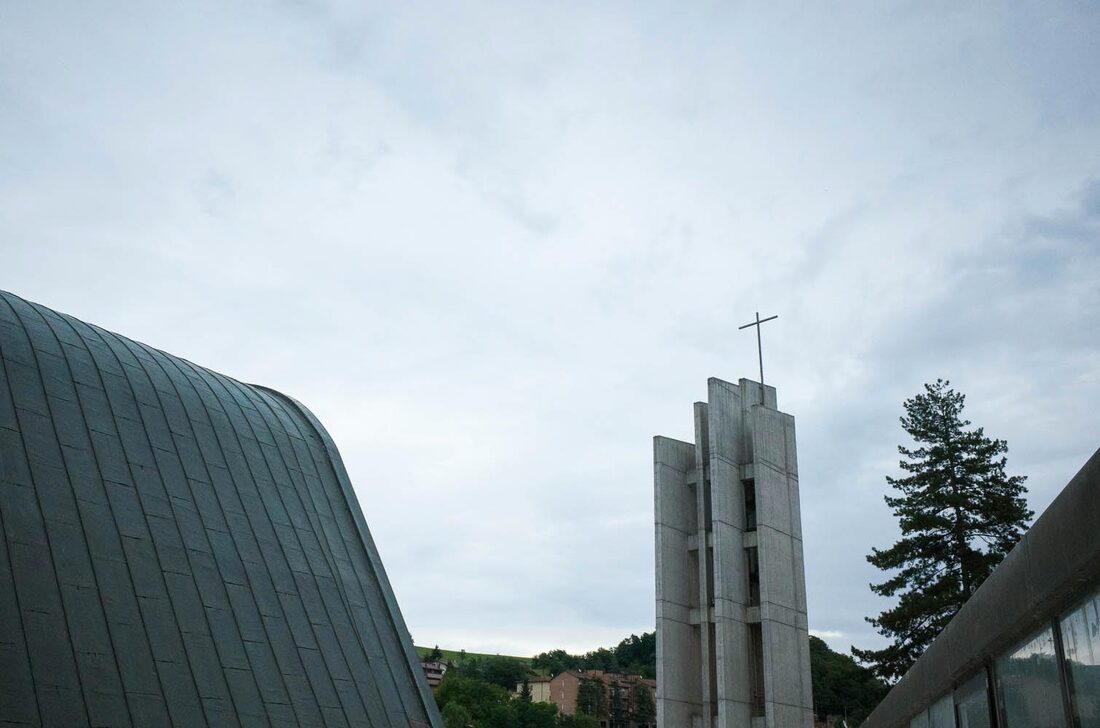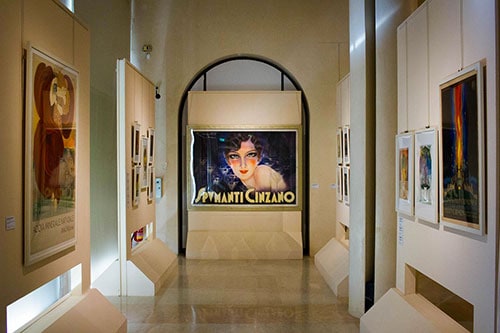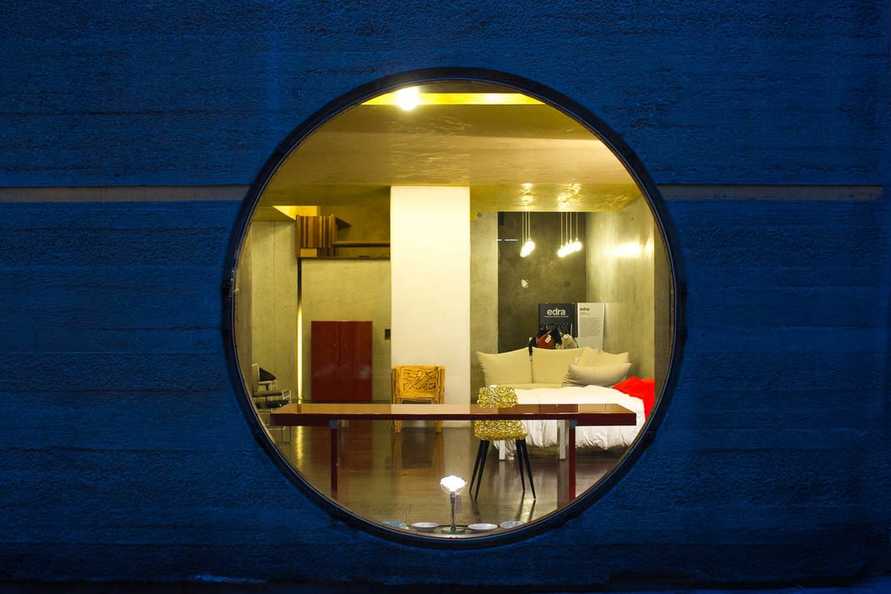The story is long and complex. Let’s start from the beginning.
From Finland to Riola: Alvaar Alto in Bologna
After a first missed attempt with Le Corbusier, Lercaro asked the Finnish architect Alvar Aalto to create a church in Riola, a small village between the mountains, close to Rocchetta Mattei castle.
Aalto accepted the assignment and arrived in Riola with his wife Elissa in a snowing day in January 1967 for a first visit, welcomed by locals waving Finland flags.
It was an incredible event for the village that would have finally had a square, a church and the first and only Aalto’s building in Italy.
Painting with the light: the project of the church
The church should have risen from Reno river, that flows a few meters from it.
But what made Aalto’s work unique was the use of light.
He designed a church without windows, but just skylights on the roof. Natural reflected light hits the white walls and paints different shapes with contrast.
Riola’s church looks like extreme and mature development of Aalto’s previous works at Otaniemi Conference Hall and Wolfsburg church.
An unexpected winter: the stop of the works
Ready to start?
No.
On February 1968 Lercaro resigned. After 50 years the mystery still floats around that decision.
The result was a cut to the budget and an immediate hiatus of the project.
10 years after the announcement, the church seemed like a beautiful sketch on a napkin, lost in the pocket of an old coat.
But mountain folk don’t give up easily.
The dawn arrives: the church see the light
Riola citizens created a civil committee leaded by Don Luigi Borri, Riola’s preacher.
But it’s Mario Tamburini, local surveyor and entrepreneur, who gave the final push to the project.
He decided to build the church at his own expenses.
His company Grandi Lavori worked during downtime and used prefabricated elements to lower production costs.
Works started in 1975.
Lercaro and Aalto couldn’t see the result of their efforts.
The first Mass was celebrated on August 15th, 1977 with Elissa Aalto, Mario Tamburini and all the group of architects in the crowd.
Info
Piazza Alvar Aalto 1, 40030, Riola (BO)
Tel. +39 051 916355
www.parrocchiariola.it
10 unusual and not boring museums to visit in Emilia RomagnaCan you skip Louvre in Paris, Prado in Madrid or MoMa in NYC? No, but sometimes I’ve found myself lost and looking for the exit.
These hidden museums around Emilia Romagna aren’t landmarks, but deserve all your attention. |
6 reasons to visit Parma‘I’m sure you already know Parma. You met it in the unique taste of Parmigiano Reggiano cheese or in the sweetness of culatello and Parma ham.
But food isn’t the only masterpiece there. |
Gavina showroom: a unique shop in BolognaIf you love modern architecture and interior design you already know that in Bologna there’s a precious jewel that draws visitors from around the world: it’s Dino Gavina showroom in Via Altabella, 23.
|




